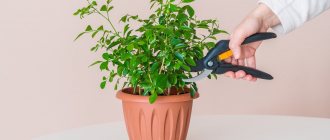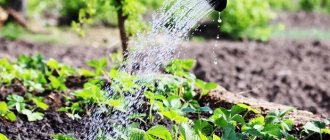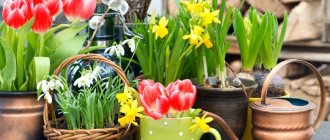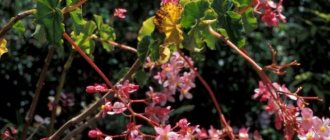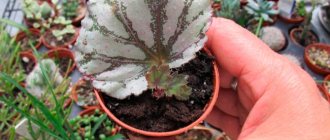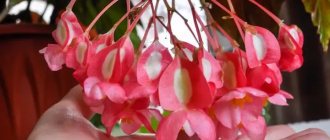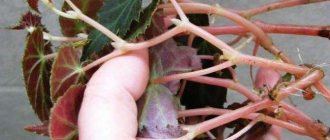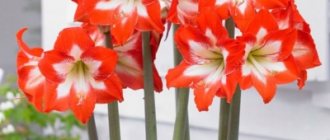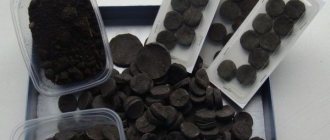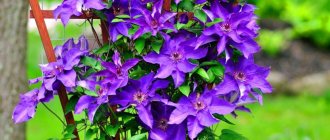How to feed begonia at home
An ornamental flowering plant must be additionally fertilized. This is most required for tuberous begonia. The flower is fed with nitrogen and phosphate-potassium fertilizers.
Note! It is important to choose the best product to feed your begonia and follow the rules for its use. This is especially true during the flowering period.
The most important substances for blooming buds are potassium and phosphorus. Fertilizers are used 2 times a month. Due to this, the number of buds increases, the flowering period lasts longer, and the healthy appearance of the flower is ensured.
Decorative foliage plants need fertilizers containing nitrogen or complex compounds. They are used only for deciduous varieties. As a result, the plant actively grows green mass and the decorativeness of the leaves increases.
Important! Nitrogen-based products inhibit the development of buds.
Begonias in pots
Fertilizers and nutrition for growth
How to feed phlox in June before flowering
Spring is the period of awakening of begonias, then they are transplanted into pots into a new substrate. Shoots begin to actively grow. The first feeding is relevant precisely at this time. Ammonium nitrate should be chosen as a fertilizer. Nitrogen and potassium agents stimulate the growth of shoots and the growth of green mass.
Note! Do not overuse ammonium nitrate. Excessive amounts of nitrogen prevent flowering and even the formation of buds.
General rules for applying fertilizers
At home, when applying fertilizer for begonias, you should consider some factors:
- Light and temperature. The fastest absorption of fertilizing will occur only if the plant is in good health. Begonia loves light and warmth, and is afraid of sudden temperature changes and drafts.
- Time. It is better to use fertilizers in the evening or even at night, after dark.
- Water. The absorption of essential nutrients by the plant depends on soil moisture. It is better to water the flower a few hours before using the fertilizer.
- Safety. Fertilizers should not directly touch the plant. This may cause a chemical burn.
- Moderation. The quantity and frequency of fertilizer application must be observed. Excesses are just as detrimental to the plant as lack of substances.
Feeding begonias for abundant flowering and growth is done using both factory and folk remedies.
What to look for when buying a plant
When purchasing, always be very careful when choosing a plant.
. In order for it to please you for a long time, it is important to choose a healthy flower.
Pay attention to the leaves, which should be firm and free of any spots. Leaves should be checked for insects or cobwebs. Experienced flower growers advise buying specimens with half-opened buds, because when the tropical guest gets used to the new home conditions, she will begin to delight you with lush flowering, and a plant with flowers in a new environment may shed its inflorescences.
If you prefer to grow Begonia
from tubers, they should be selected small and elastic. If they have brown spots, you should refuse to purchase, as this is one of the signs of improper care of the tuber.
If it so happens that you purchased a plant with pests, then try to immediately neutralize them and revive the plant. To do this, place it in the shade and treat it with preparations specially designed for this. Just remember to separate the flower from other plants so that they cannot become infected. Do not disturb the purchased flower for about a week, then surround it with complete care and proper care, from which your tropical guest will certainly perk up.
What and how often to feed for flowering
An indoor flower should bring aesthetic pleasure. The question of how to fertilize begonia for flowering becomes relevant. Ready-made products can be bought in the store; there are specially developed fertilizers for these plants (“Begonia” or “Good Power”).
The first element required for feeding is potassium. You can use a weak solution of saltpeter.
Additional Information! The flowering period of the plant is about six months - from May to December. Then the plant goes dormant. At this time, the flower loses its leaves and dries out.
In summer, feeding begonias should not stop. Complex fertilizers are used for house flowers. A popular combination product is Kemira Lux, which is used for both growth and lush flowering.
Frequency of fertilizer use:
- The first feeding is done during budding.
- Then every 2 weeks until rest.
Feeding can be done more often, but you need to make a weaker solution. When the plant stops blooming, the last replenishment with useful substances is done.
Important! Feeding tuberous begonias should not contain chlorine.
Description of the plant
Begonia is a herbaceous, shrub or subshrub plant of the Begoniaceae family . The root is tuberous or a creeping thickened tuberous rhizome. The leaves are asymmetrical, oblong, often green-red in color. The flowers of the plant are irregular, unisexual and monoecious. The tepals are unequal and brightly colored. The fruit is a capsule. Propagated by seeds, leaves, cuttings. The areas of origin of begonia are Mexico, Asia, India, Africa and South America.
Traditional methods of fertilization
You can prepare fertilizer for begonias yourself. Popular recipes:
- Yeast. Contains the hormones cytokinins and auxins. They are necessary for the active growth of begonia. Their action: mineralization of organic substances and production of phosphorus and nitrogen. The topping is a solution of 1 g of dry yeast, 1 tsp. sugar and 1 liter of warm water. The mixture is infused for 3 hours. Before use, the solution is diluted with water in a ratio of 1:5. The frequency of feeding the plant is no more than 5 times a year.
- Sugar. Is a direct source of glucose. Preparation of the solution: dissolve 1 tbsp in 1 liter of water. l. Sahara. You can immediately water the plant with the product. It is enough to repeat the procedure once a month.
- Tea brewing. The used tea bag should be dried. When transplanting begonia, the tea leaves are mixed with the substrate in a ratio of 1:3. Having completed planting the plant, you need to thoroughly water the soil.
- Citrus peel. Fruit peels are a storehouse of vitamins. Preparation: peels of oranges, tangerines or lemons are poured with boiling water. The amount of peel is 80% of the capacity of a liter jar. The liquid is infused for 5 hours, then diluted with water in a ratio of 1:5. The frequency of such fertilizer should not exceed 1 time per month.
- Eggshell. A begonia fertilizer solution with this product is used every month. It is prepared from eggshell powder filled with water (ratio 1:5). Infusion time is 15 days, stirring every 3 days.
- Banana peel. The rind of the fruit is dried and ground into powder. It is used to sprinkle the soil on top, after which the plant is watered abundantly. The frequency of the procedure is monthly. The optimal effect is obtained by mixing the powder with soil when replanting a flower in spring.
- Wood ash. A solution for irrigation is prepared from it. Dilute 3 tbsp in 1 liter of water. l. mineral substance. Let the solution brew for a week, water the plant once every 14 days.
Diseases and pests
Begonia quite often suffers from powdery mildew.
. This is a fungal disease that is formed due to excess moisture. In order to prevent the development of this disease in time, you need to carefully examine the lower leaves and the core of the bush. It is these parts of the plant that are most vulnerable to disease.
If a problem is detected, immediately stop watering the plant and remove all affected areas. This will stop the fungus from growing throughout the flower.
The main pest for Begonia
are red spider mites and aphids. In order to get rid of them, you need to spray the leaves with special preparations, and then put a bag on the plant so that it cannot allow air to pass through. This is necessary to enhance the effect of the plant.
If you do everything correctly, no pests will be harmful to your plant.
Conclusion:
Begonia flower is a very grateful plant
. If you care for it correctly and with all the love, then the beauty, health and gorgeous flowering of the plant will appear in full force. They will bring brightness into your life and give you unforgettable moments of happiness.
What elements does begonia need for abundant flowering?
Begonias grow actively from March to October, then they lose their leaves and “hibernate.” At this time, all shoots are cut off from the plant, the tubers are placed in damp sand and stored until spring in a dark, cool place, maintaining moderate humidity.
In March, the begonia is planted in a pot, and shoots should appear immediately. At this time, the first fertilizing with nitrogen (saltpeter, urea) is given. In the future, flowering plants should not be fed with nitrogen agents, otherwise the begonia will produce abundant foliage instead of flowers. Suitable fertilizers for flowering begonia are special complexes for indoor plants with a predominance of potassium. Leaf varieties are suitable for nitrogen fertilizing.
You can tell about the lack of nutrients by the appearance of the plant.
| Element | Sign of deficiency |
| Potassium | The edges of the leaves turn yellow and the flowers die |
| Phosphorus | Growth has slowed down |
| Calcium | The plant has become susceptible to disease |
| Iron | Pale leaf color |
Begonias also require magnesium, boron, manganese and zinc. These elements are present in balanced quantities in ready-made mineral complexes for indoor plants.
Features and differences between wintering home and garden begonias
November is the beginning of the rest period, but this is an approximate period. It all depends on where the plant spent the summer. What is the goal, to extend flowering or reduce it. But in any case, the flower needs to rest for at least 3 months.
Indoor
When storing domestic plants in winter, they are not removed from the pot, but cut off, leaving a shoot of 1 cm. They are kept under the conditions described in the seasonal table.
Garden
At the end of October, garden specimens are dug up, the roots are shortened, treated with a fungicide (Fitosporin), dried, and placed in a container with peat. Place in a dark, dry room until spring. They can also be stored on the refrigerator door, wrapped in sphagnum moss or in a cotton bag.
In the spring, they are planted in a pot, and after germination, they are planted in open ground.
How to fertilize at home?
Feed the begonia growing on the windowsill every 10-12 days, observing the following rules:
- In order for nutrients to be well absorbed, the pot with the plant must be in a place illuminated with diffused light at a temperature of +13 to +23 ° C and a humidity of 60%.
- Fertilizing should be done in the evening.
- Two hours before application, the begonia is watered. Tap water must be left to stand for two days and then filtered.
- The fertilizer composition should not come into contact with shoots and leaves.
Organic
Experts believe that organic fertilizers are not suitable for tuberous begonia. However, some hobbyists use vermicompost as a top dressing.
When growing the plants in question, it is appropriate to use the organic substance peat, but not as a top dressing, but to soften the water.
Mineral and organo-mineral compositions
Let's consider the most effective complex feedings that will be useful for begonias.
Watering rules
In order for the plant to grow and develop well, you need to follow simple watering rules:
- Do not use hard water from the tap, but first let it sit for 24 hours and then boil or filter it. You can also use garden peat to soften water - 1 kilogram per 10 liters of water.
- At moderate air temperatures, watering should be uniform and preferably at the same time, preferably in the morning.
- In summer, watering should be plentiful, but every other day, so as not to flood the plant.
- In winter, the plant should be watered as the soil dries out; usually, watering once a week is enough. In cold weather, it is worth watering with warm water.
- After watering, when the soil dries out slightly, it is necessary to loosen the top layer of soil to a depth of 1 centimeter. This simple maneuver will help retain soil moisture inside the pot longer.
- To water begonias, you can use the method of immersing the pot. To do this, you need to pour soft water into a container in which you can place the pot. Place the pot with the plant in water and wait until the soil absorbs water through the drainage holes at the bottom of the pot. After 20-30 minutes, remove the pot from the water and place it on a tray.
Begonia care
The main secrets of proper care for this crop can be summarized in several points:
- When choosing a pot or other container for planting a plant, you should pay attention to low, but quite spacious models. It is best to give preference to clay pots, as this material allows air to penetrate well to the roots of the begonia. It is recommended to soak new clay pots well in water before planting, and if the pot has already been used, then it should be washed well and dried over a fire.
- The container in which begonia will grow must have good drainage. It is also better to choose a tray for the pot made of clay, for an already known reason. After all, it ensures moisture retention, allows oxygen to pass through, and is also good for using the technique of watering through a tray.
- The temperature in the room in which begonias live should be room temperature, from 12 to 20°C. It is advisable to ensure that the plant does not receive direct sunlight; it is better to shade them from direct sunlight. From October to January, begonias enter a dormant period, then they need to be moved to a cooler place.
- The moisture this indoor plant so needs is maintained through proper watering. Watering begonias will not be difficult, but in order to achieve the necessary air humidity, which is simply vital for this crop, you will need to work extra hard. In the summer, experts strongly recommend spraying begonias, which will help enlarge and saturate the plant with moisture. More abundant and frequent watering is necessary for large and healthy begonia bushes, but it is better to slightly limit watering for weak and sick plants. After all, as you know, the main thing with watering is not to overdo it, since an excess of moisture can have a detrimental effect on the general condition of this indoor plant: the leaves begin to turn yellow, and subsequently fall off and rot.
- In order for the plant to grow better, special soil mixtures are often used. For begonias, the most popular mixture is one that contains coniferous soil, beech leaf soil, a little sand and charcoal. The soil also needs to be loosened from time to time.
Errors and their consequences
If, when feeding plants, you do not adhere to the specified standards for certain products, then such negligence can lead to a number of consequences:
- If the plant is overfed, it may die.
- Oversaturation of a plant with organic or mineral fertilizers can lead to death; it is necessary to alternate fertilizers.
- If the plant has just been planted or transplanted, it cannot be fed for a month; an immature seedling can slow down the development of the root system.
- If a plant is sick, its feeding should be done carefully and start with small doses, since when the plant is sick, the roots of the plant are weakened and it can perceive nutrients as a destructive component.
- Feeding during flowering or dormancy can destroy the plant.
Descriptions, types and features of begonia care can be found in separate articles on our website. Read about:
- how it reproduces and what ways there are to propagate rooting begonia;
- why the plant’s buds fall off and the leaves turn yellow and dry;
- what are the rules for caring for the plant in winter;
- how to properly water and prune;
- when is a flower transplant needed and what pot is suitable for this.
Feeding roses with yeast
Types of baker's yeast for feeding flowers
Fertilizer application is an important stage of agrotechnical measures. And rose bushes need them, just like other plants.
Why do you need to feed roses?
A blooming rose absorbs a large amount of useful elements, which are compensated by fertilizing. Without them, the bushes stop developing, the flowering time is shortened, the buds become small, and the flowers are inconspicuous. Roses need fertilizing with phosphorus, potassium, magnesium, and calcium. Fertilizers must contain iron, copper, aluminum. All these elements are found in ordinary baker's yeast (single-celled fungi).
Note! Yeast solution is used to water both roses and any street and garden crops.
Why yeast is useful for roses
All of the above elements are included in regular baker's yeast. Why do you need yeast fertilizer for roses:
- nitrogen stimulates the growth of stems, shoots and foliage;
- phosphorus helps bushes adapt to adverse environmental conditions;
- iron and potassium maintain water-salt balance and increase immunity;
- microelements help strengthen the plant body.
Yeast feeding helps the shrub awaken in the spring from winter hibernation. It also supports the plant during the first and second flowering in June - August.
Important! Yeast is activated at a temperature of +15… +20 °C, so a positive result is expected when the soil is warmed to the required temperatures
LiveInternetLiveInternet
Wednesday, April 04, 2012 12:36 + to quote book
Tuberous begonias grow well and bloom only in conditions that are comfortable for them. Here you need to follow several basic rules: 1. Tuberous begonia is sensitive to bright sunlight. In hot, dry weather in the sun, flowers and leaf tips may wilt, but bloom well in partial shade. However, with strong shading, the shoots become elongated, the leaves fall off, and few or even none flowers are formed. Therefore, for lush flowering, it needs a bright place, but without direct sunlight, or partial shade (it is better if it is sunny before lunch, and partial shade after lunch). For loggias and balconies facing south, shading of begonias during the midday hours is necessary. 2. Begonia does not tolerate drafts and places exposed to the wind. The shoots of tuberous begonias are fragile and break in strong winds, so it is necessary to provide protection from the winds. And because of drafts, begonias drop flowers and buds. 3. The place for begonias should have good ventilation, because... she does not like stagnant air (which happens on glazed loggias and balconies), she needs a constant flow of fresh air. 4. Proper watering is very important. Tuberous begonia does not tolerate flooding, so the pot must have good drainage. To preserve flowering in hot, dry weather, you need to water the ground under the begonias early in the morning (while the ground has not yet warmed up after the cool of the night), but not with cold water. When watering during the day, burns appear on the leaves. And also, if you water overheated soil with cold water during the day or evening, the roots may die.
5. High air humidity (not lower than 50-60%) also promotes lush growth and flowering of tuberous begonias. If the air is very dry, you need to place containers of water next to the pots with begonias or spray the air around them, but it is not recommended to spray the begonias themselves, so as not to cause brown spots and rot on the leaves and petals. 6. The optimal air temperature for the normal well-being of tuberous begonias is in the range of 20-24°C, some varieties feel good even at temperatures below these values, but higher temperatures have a depressing effect on tuberous begonias. 7. Tuberous begonia loves feeding, but there is no need to overfeed it. Fertilizers that she did not have time to process appear on the surface of the soil in the form of white deposits, and sometimes change its acidity. Also, overfed plants are less resistant to pests and diseases. The first feeding is carried out in the spring (after the shoots begin to grow, but not before the tuber is completely filled). It is recommended to carry it out with nitrogen fertilizers. Moreover, 1-2 such feedings are enough, because... an increased dose of nitrogen promotes active growth of green mass, and a plant fed with nitrogen grows a trunk and burdock leaves, but does not bloom. Later (until autumn) fertilizing is done with water-soluble complex mineral fertilizers. The first such feeding is carried out at the beginning of budding, and then repeated every two weeks. The last fertilizing (in September) is carried out after the end of flowering; the dose of nitrogen in it is significantly reduced (it is best to use potassium fertilizers that do not contain chlorine). It is not recommended to feed tuberous begonias with organic fertilizers. Begonias also do not like chlorine-containing fertilizers.
After continuous summer flowering, closer to autumn, when the days become shorter, begonias begin to grow tubers. During this period, it is necessary to create all the conditions for begonias so that the tubers, exhausted during the flowering period, have time to accumulate enough nutrients before leaving for the dormant period. At the beginning of autumn, tuberous begonias stop feeding and gradually reduce their watering. The last fertilizing is carried out after the end of flowering (in September), the dose of nitrogen in it is significantly reduced (it is best to use potassium fertilizers that do not contain chlorine). It is recommended to remove new buds that appear in September so that begonias do not waste energy on flowering. On the contrary, it is advisable not to cut off fading shoots for a longer period of time (until the leaves completely wither and the stems completely dry out), since food is still supplied from the tops to the tuber. All this helps to increase the mass of the tuber. Tuberous begonias that are grown in pots are left outside until the first autumn frost. In central Russia - until October. The rest period of tuberous begonia should be at least 2 months. In any case, by the end of February your begonia will have time to rest. Therefore, by mid-October - early November (not earlier), if the above-ground part of the begonias has not died off by this time, you need to cut off the stems of the begonias near the ground.
Tuberous begonia is a monoecious plant, that is, flowers of different sexes are formed on one plant: male (larger, double) and female (single-double with a three-lobed seed pod under the sepals). To prolong the flowering of tuberous begonia, it is recommended to remove the female flowers at the very beginning of their development, and leave the male flowers. There has long been debate on the Internet between supporters and opponents of removing female flowers. Ultimately, everyone decides for themselves whether to remove or not to remove female flowers. During the dormant period, tubers of different sizes are stored differently. Young first-year begonias with small tubers, grown from seeds, will try to grow tubers and are unlikely to retire. There is no need to force them to winter rest and there is no need to cut off the above-ground part of begonias either. Pots with such begonias are kept in winter in a bright, cool place with moderate watering (in winter, their shoots stop growing, but often remain green). If small begonia tubers are stored in the same way as large ones, then the likelihood of them drying out in winter increases significantly. Begonias grown from standard tubers manage to grow fairly large tubers by the dormant period. They are stored differently: 1) If begonias were grown in open ground, then after the first autumn frosts they are dug up with a clod of earth. The above-ground part is cut to 2-3 cm with pruning shears. Without clearing the soil from the roots, the tubers are placed in boxes and transferred to a warm, ventilated room. After about 2 weeks, remove the remaining shoots, which by this time are easily separated. The tubers are dried and stored in the basement at a temperature of 6-10°C and air humidity of 80-85%. The gaps between the tubers are covered with peat. If there is no basement, then you can store them in the refrigerator by lightly shaking them off the ground, putting them in a cardboard box and sprinkling the tubers with dry peat, sawdust or sand. 2) If begonias were grown in pots, after the shoots die, the tubers can be left for the winter in the same pots. After the first frost, pots with begonias are brought indoors and watering is reduced. By mid-October - early November, watering should be completely stopped. If the upper part has not died off on its own by this time, cut off the stems of the begonia near the ground and place the pot in the basement or a dark, cool place with a temperature of 5-12°C, where it will overwinter until February. 3) Young first-year begonias with small tubers, grown from seeds, are stored in a completely different way in winter, since they have a relative period of rest - their above-ground part often remains green in winter. Young begonias remain overwintering in pots placed in a bright, cool (about 10-15°C) place with moderate watering.
Source https://frauflora.ru/viewtopic.php?f=90&t=4243
Series of messages “Indoor”:
Part 1 - Fuchsia varieties Part 2 - Gloxinia Part 3 - Hot shower for flowers Part 4 - Tuberous begonias. Secrets of care and cultivation Part 5 - Shade-loving indoor plants Part 6 - Cuttings or sowing seeds ... Part 25 - Accelerating the growth of cacti Part 26 - Pots from plastic bottles Part 27 - Cuttings of dracaena
Tags:
tuberous begonia indoor flowers
Cited 8 times Liked by: 2 users
Like share
0
Like
- 2
I liked the post - Quoted
- 0
Saved
- Add to quote book
- 0
Save to links
Liked2
0
Popular varieties of evergreen begonia
Begonia everblooming is one of the favorite plants of breeders. Many varieties adapted to temperate climate conditions have been developed; they are cultivated in home plantings. Several varieties are the most popular.
Begonia "Lotto" is a tall, compact bush. The leaves are velvety, bright emerald. Large flowers can be painted in different colors.
Begonia "Senator" is a medium-sized bush with bronze leaves. Medium-sized flowers can have different colors.
Begonia "Ambassador" is a compact, medium-sized bush. Green leaves with bright red edges. The flowers are monochrome (white, red or pink) or bicolor.
Begonia "Queen" - low-growing bushes with bright green leaves and double flowers of carmine, pink or snow-white color.
Begonia "Cocktail" is a low-growing, lush-flowering bush. Leaves are brownish-red. The flowers are painted in scarlet, white, pink tones.
In today's article we will talk about begonia, more precisely about the features of caring for this flower. Thanks to its unpretentiousness, begonia occupies a leading position among flowers that are easy to grow at home; almost every amateur gardener has at least one representative from the begonia family.
Yeast feed recipe
Yeast fertilizer for roses is prepared in different ways.
Feeding roses with fresh yeast
Fresh produce is purchased in the store. To obtain the solution you will need the following ingredients:
- yeast – 100 g;
- water – 1 l;
- sugar - a pinch.
Place the main product in a deep vessel, sprinkle with sugar and fill with water at room temperature. At the end of the fermentation process, the composition is poured with 5 liters of water. Freshly prepared liquid is injected under rose bushes at the rate of 1 liter per bush.
Note! When making the mixture, sugar can be replaced with honey, jam, jam or marshmallow
Preparation of yeast-based fertilizer
Dry yeast recipe
Dry yeast powder is sold in packaged form. Ingredients for preparing the solution:
- dry yeast – 10 g;
- sugar – 2 tbsp. l.;
- water – 10 l.
The procedure for preparing the fertilizer is identical to the first option, with the exception of the volume of added water. After thoroughly mixing the composition, the bush is watered in the root area.
Dry yeast powder feeding
Yeast with herbal tincture
The main ingredient in this recipe is dry yeast. Ingredients and preparation:
- weeds from the garden - a lot;
- Humate concentrate - 1 bottle (you can Fitosporin - 1 plate);
- dry yeast – 200 g;
- water – 10 l.
As a weed, it is better to take mint, nettle, dandelion, celandine, horsetail or thyme.
Place the grass in a deep container, fill it with water, place the container in the sun and wait 2-3 weeks. After fermentation, the grass is sent to compost, humus, yeast powder and 10 liters of water are added to the aqueous composition. Water the rose bushes at the root with a well-mixed mixture.
Note! When watering a bush rose, the composition is introduced at the root. Contact of the solution with the leaves is unacceptable.
How to feed roses with yeast and sugar
Most of all, yeast loves sweet foods, in particular sugar, jam, and honey. Therefore, every recipe contains a sweet product.
Ingredients:
- yeast, dry or wet;
- sugar or jam – 2 tsp;
- warm water (+24 °C) – 1 l.
You will need a basin and a 5-liter bucket.
Preparation procedure:
- Place the yeast in a bowl.
- Add sugar.
- Pour 1 liter of water.
- Wait for fermentation to finish.
- Pour the resulting mixture into a bucket.
- Dilute with water to the edges of the container, stir.
The bushes are fertilized with the prepared composition, spending 1 liter per rose bush.
Feeding roses with yeast and ash
Yeast fertilizer will become even more useful if you add wood ash to it. Frequent watering and rain wash away essential elements such as calcium and potassium from the soil. Yeast supplements with the addition of ash solve this problem. You don’t even have to pour the ash into the solution, but simply scatter it under the bushes and pour the yeast solution on top.
What fertilizers are applied to the potato bed?
After the potato harvest, the cycle of field work does not stop. It is at this time that plowing and digging are carried out, and then fertilizers are applied, creating a reserve for the next year:
- straw manure is the best representative of organic fertilizers, without which growing potatoes is impossible. It is believed that applying such a simple fertilizer increases the yield by 2 times. Before plowing, it is scattered over the bed at the rate of 5-10 kg per 1 sq.m;
- Green manure can also be embedded in the soil of freshly harvested potato beds. They are mowed and covered with a 10 cm thick layer of soil;
- nitroammofoska, nitrophoska and ammophos are excellent complex fertilizers for autumn feeding of potato beds. The general application rate is about 2 tbsp. per 1 sq.m, but it can be adjusted based on the instructions for use;
- other complex compositions. In particular, in the fall it is good to “fill” potato beds with double superphosphate (25 g/sq.m), potassium chloride (15 g/sq.m) and vegetable ash (300 g/sq.m).
You can feed potatoes with humus, compost and rotted manure (no more than 10 kg per 1 sq.m.)
Autumn is not the time to relax and rest, enjoying the fruits of your labor. In this short period of time before the onset of winter cold, you need to prepare for the next season and provide the garden with a comfortable “wintering”, which will allow you to count on a rich harvest in the future.
How to prune begonias
If you do not prune and pinch when caring for begonia in a pot, it will quickly lose its attractive appearance, stretch out, its stem will become bare, and the leaves and flowers will become small. To get a lush and beautiful crown, you need to start forming begonias as early as possible. This is done in the spring as follows:
- After their length is approximately ten centimeters, their top is also trimmed. When they are covered with new shoots, the formation of the bush is stopped;
- Subsequently, it is necessary to prune or remove overgrown or unnecessary branches.
In addition to a beautiful crown, pinching and pruning improve the flowering of begonias, ensure the correct proportions between the roots and the crown, and also rejuvenate the adult plant. Begonia pruning should be done using a sharp and clean knife to avoid infection. The sections are treated with crushed charcoal to prevent rotting.
Azalea care instructions can be found here.
How to care for alocasia is written here: https://cvetolubam.ru/alokazia/
This article will help you avoid mistakes when caring for indoor maple and its propagation.
Methods for propagating indoor begonia
How to propagate
Such a plant can be propagated by seed or vegetative methods (stems, leaf cuttings, dividing a bush or tuber or rhizome). The simplest and fastest way is vegetative.
Growing begonia from seeds
You can grow begonia from seeds quite easily and quickly. Sowing is carried out in the last days of February or the first of March. To do this, small seeds must be distributed over the surface of the substrate (not embedded). Then the container should be moved to a well-lit, warm place, after covering it with film or glass. Crops should be watered through a tray or using a sprayer. After the first seedlings appear, the cover should be removed for good. Picking is done after the plants have formed 3 or 4 true leaf blades. After 8 weeks, young plants can be transplanted into individual pots. Such begonias can begin to bloom in the first year, but in order for this to happen, they often need additional lighting.
Division of tuber (rhizome)
To propagate deciduous species, rhizome division is used. This procedure is carried out in spring. To do this, you need to pull the flower out of the soil and use a very sharp knife to divide the rhizome into several parts, with each division having roots and at least 1 shoot or buds. The cut areas should be sprinkled with crushed charcoal. After this, the divisions are planted in individual containers.
The tuber of an adult plant can also be divided into several parts. After this, you need to wait until the cut areas dry slightly and dust them with crushed charcoal. Then the divisions are planted in individual containers.
Propagation of begonias by cuttings
The simplest of all vegetative propagation methods is cuttings. From the bush you need to cut cuttings that have 3 or 4 leaf blades. To prevent rot from appearing on the cuts, they should be treated with charcoal. Then the cuttings must be planted in a mixture of leaf and peat soil and sand (1:1:1). The container is placed in a well-lit, warm place where there is no access to direct sunlight. The cutting requires moderate watering, so the soil should be moistened only after the soil has dried to a depth of 1 to 2 centimeters. You can root cuttings by immersing them in a glass of water. The roots will grow in about 4 weeks.
Begonia propagation by leaf
Since most species have fairly large and dense leaf plates, they can be propagated by leaf cuttings. In this case, both the entire leaf plate and part of it are suitable for propagation. If begonias are propagated by a whole leaf, then the main veins must be cut on its underside. Then the sheet plate is laid with the notched side on the surface of moistened sand, which must be calcined in advance. After this, it is fixed in this position. Watering is carried out through a tray. After about 8 weeks, roots will appear from the places that were cut, and after some time young plants will begin to grow. Strong, grown young begonias should be separated and planted in an earth mixture consisting of deciduous soil, sand and peat (1: 1: 1).
